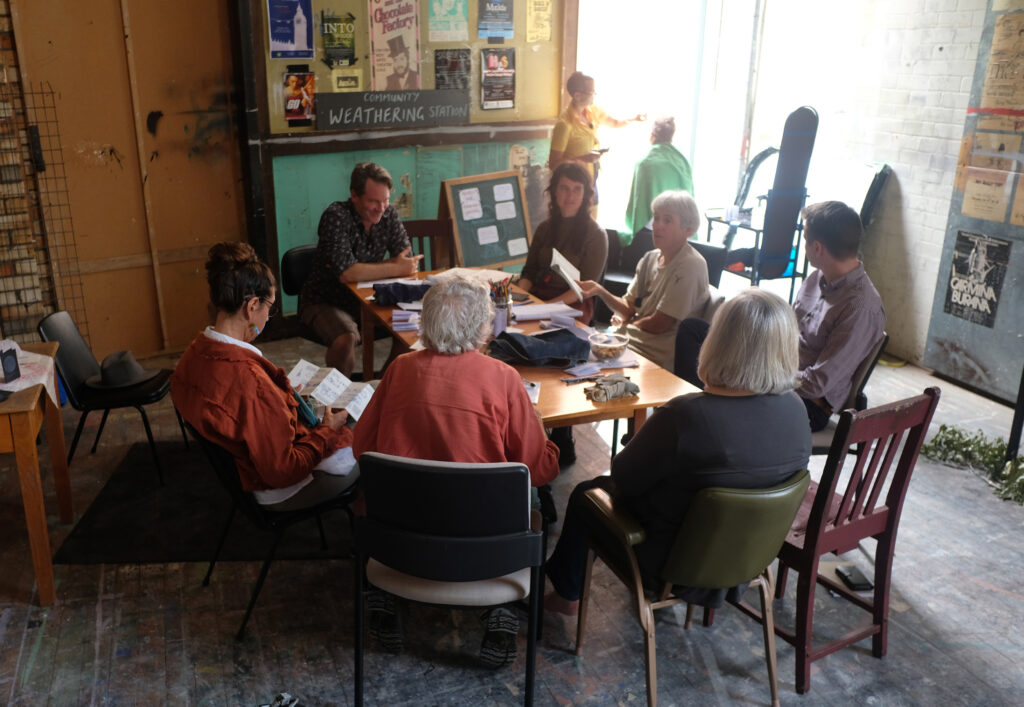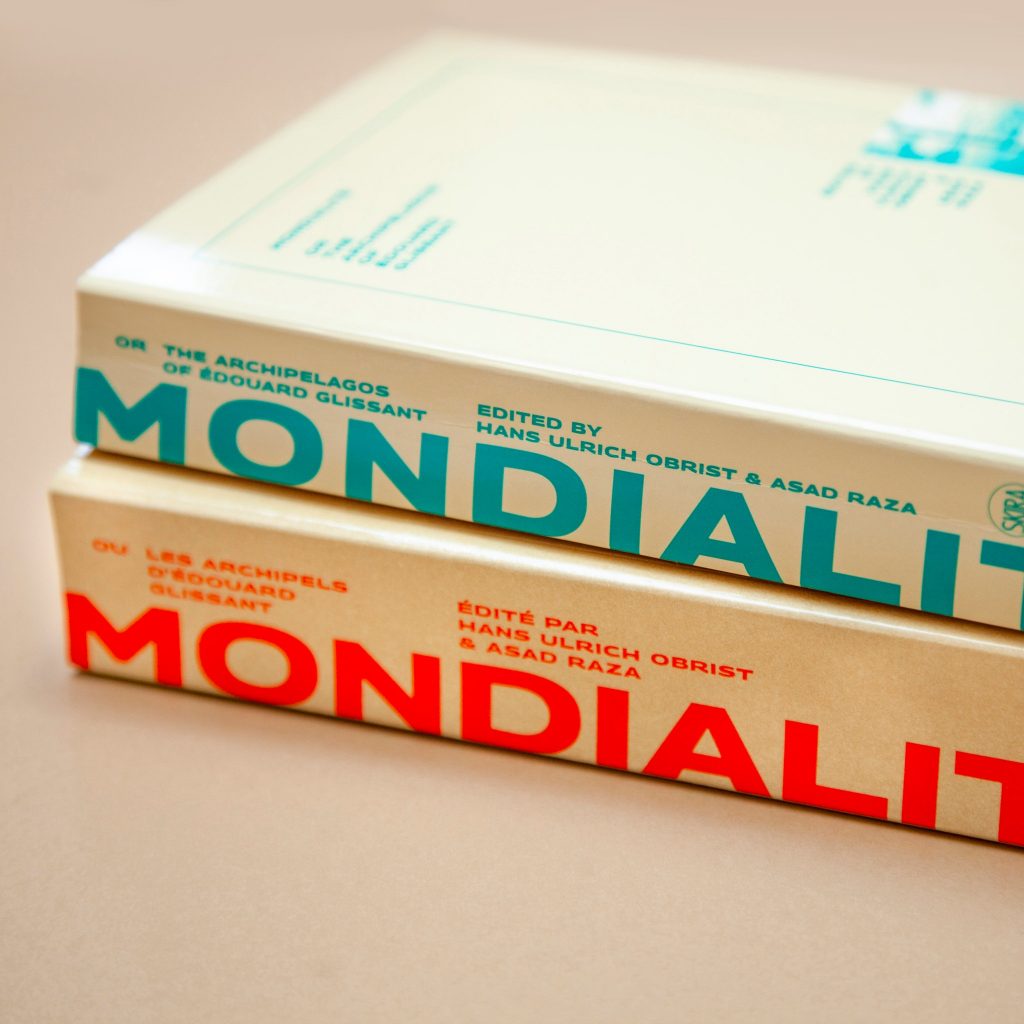2. Field Work
Lisa Kelly & Dennis Tan
4 – 18 October 2008
Chrissie Cotter Gallery, Sydney
[First published in July 2009 in runway, Issue 14: Futures. Reproduced courtesy of The Invisible Inc.]
Seen at a glance, this rice straw may appear light and insignificant. Hardly anyone would think that it could start a revolution.1
I’m eyeing off another piece of crumbly, caramelised cake laced with public mulberries (part of Working System), still warm from being baked in the oven at the back of this former community hall-turned council-run gallery. Tennis balls thud lazily just outside open glass doors that let in the afternoon sun and a steady stream of more would-be cake-eaters. It is the final day of Lisa Kelly and Dennis Tan’s second collaborative endeavour in the expanded neighbourhood of Newtown-Camperdown, and both mulberries and conversation are in plentiful supply. 2. Field Work is a continuation of their first exhibition project, [2. 1. The Lively Plane, 15 Feb – 1 Mar, 2008, ICAN, Sydney] and again the objects they present – homely armchairs, a table covered with official-looking papers and mulberry branches, team flags hung from the ceiling, a line of lemons that include a stray tennis ball – have arrived via a process of curious enquiry into what lies just outside.
Kelly and Tan recast the gallery as an evolving space that generates (and documents) an ongoing dialogue between the artists and the community. Rather than a static receptacle for finished works, it is a platform for contemplation and sometimes tense negotiation of what it means to live within a particular neighbourhood at a particular time. Relational modes of practice are at play in the sharing of food and the productive role given to conversation, with the exhibition unfolding as a series of small gestures, quiet moments and busy experiments.
A more intriguing reading can be found by turning to the project of ‘Sustainment’ 2, at present the domain of design philosophers including Tony Fry, Anne-Marie Willis and Ezio Manzini. Such theorists have recognised emergent creative practices that do not fit within existing delimitations of art and design, and are ‘sustain-able’ in that they enable behaviours and ways of living which are locally specific, less resource-intensive and regenerative of environments and the communities they support. Most recently, in Design Futuring: Sustainability, Ethics and New Practice, Fry argues for the development of a widespread ‘design intelligence’3 that would deliver ‘the ability to read the qualities of the form and content of the designed environment in which one exists’ as well as ‘the means to make crucial judgements about actions that could increase or decrease futuring potential’. 4
Visual artists, especially those who work in an investigative mode like Tan and Kelly, seem peculiarly well-positioned in this regard. In Field Work, the artists unpack their surrounding (designed) world in a variety of rigorous and insightful ways, in conversation with one another, and with reference to their differing positions as local and visitor. For Kelly, whose work often discloses institutional frameworks, this means interrogating the building (its retrofitted hanging hooks abandoned as The Gallery System in favour of dowel on jute straps, Hanging System) and the bureaucracy of the local council (printed correspondence with whom constitutes The_Hall). As in previous projects, Kelly’s interventions mirror the (past) functional identity of this site – its flags, its paperwork, its emphasis on food and sports – considering how the space works, what its parameters are and how it could be stretched, made more elastic and dynamic.
Singapore-based Tan sets about inquiring into his temporary home – meeting the neighbours, talking/collecting/assembling/borrowing. He dismembers the art journal Broadsheet to make expandable paper screens following the pattern of the tennis court fence; upends an oversized council broom with a fluorescent light, later sprouting a head of branches. Objects appear and change and in the final days collapse into specially-made cardboard boxes. In response, the room sheet taped to one wall becomes covered in scrawled revisions that track changes in the naming and reorganisation of the space. This ongoing remaking has resonance with Heidegger’s analysis of phüsis – that all things exist within complex ecologies of exchange and are in a continuous process of becoming – an understanding crucial to sustaining and sustain-able artefacts.5
There are nods to a lineage of conceptual/minimalist sculpture, many objects being material traces of an action or social exchange. Pennants suspended from the ceiling, The journey is the object, were lent by the older men from the bowling club next door, the result of Tan’s efforts to build lines of communication between the gallery’s disparate neighbouring communities, as are the hand-copied lawn bowls rules pinned to one wall – Theory and Practice (The front ditch is the ditch at the end of the green which is directly in front of the player when they stand on the mat). Tan promises a local tennis coach he’ll leave behind Working title: court ribbon, a fading pink ribbon woven through the court nets.
These dialogues are given shape through the artists’ own presence as active and ongoing interlocutors. Working on alternate days, Tan and Kelly intended to ‘shift the space from one of presentation to continuous production’. On my earlier visit, Tan happily became a live catalogue text/tea-pourer, his makeshift cutting mat turned into seating for an afternoon of meandering conversation. In this way transmuted objects facilitate the creation of a space for what Manzini calls contemplative time – ‘doing something (walking, eating, talking with people…) at a slower pace’.6
Manzini writes of the need to envision future ‘scenarios of wellbeing’, locally-specific and regenerative of physical and social common goods. In 2. Field Work, Kelly carries out a tactile exploration of the neighbourhood, researching ‘public fruit’ 7 online and by foot and sharing her findings with visitors. Plane tree seeds gathered from nearby Camperdown Park, Planting Planes, are raised in jiffy pots in preparation for future projects8, recalling the grown tree at the centre of 1. The Lively Plane. The recurrence of these slow-moving living components suggest a conception of time at odds with the usual two-week exhibition, the kind of time-frame evoked by Joseph Beuys’ planting of 7000 Oaks decades earlier at Documenta 7. Both Tan and Kelly play with the relationality of things over time and space, the dynamic complexity of interconnected causal relations not yet accounted for in Western rationalist thought, but central to design intelligence and to forming more sustain-able practices and the future scenarios that bring them into being.
Kelly’s work intersects most with the act of creative futuring in Potential__, a neat grid of hand-rolled, unfired clay balls that contain a mix of compost and grain, herb and flower seeds suited to dry conditions … millet, nasturtium, thyme, dill, sunflower. Devised by Japanese farmer and scientist Masanobu Fukuoka (whose tattered manifesto The One-Straw Revolution also appears in the gallery) as a form of non-invasive farming, they suggest ways of engaging with our landscape other than the rationalist planning dominating council planting and modern agriculture. Their reappropriation also illustrates the ability of the artist to find and extract ‘design and sustainment principles’ from historical material and then ‘transpose them into appropriate futuring forms’.9
In the fading light, Kelly takes a small girl who likes gardening and a few other stragglers across the road into a fenced-off area of council land, overgrown with weeds and due to be sold off. Together we fling the seedballs into the wilderness and hammer in a bright yellow stake bearing a photocopied chapter from The One-Straw Revolution. This participatory gesture brings into being new ways we might live in our cities, grounded and enacted in the everyday. As my crumbling seedball flies off to places unseen, Field Work invades ‘our conversations and dreams’ 10, envisioning a future where vacant lots are shared micro-farms and (re)valued commons include cooking and eating mulberry cake gleaned from neighbourhood streets.
IMAGE CREDIT
Lisa Kelly & Dennis Tan, 2. Field Work 2009, installation view – Photo by the author
- Masanobu Fukuoka The One-Straw Revolution 1978, Rodale, Emmaus, p. 1 ↩
- The Sustainment and sustain-ability are used in place of the overused and ambiguous term sustainability. See Tony Fry Design Futuring: Sustainability, Ethics and New Practice 2009, UNSW Press, Sydney ↩
- In increasingly more unsustainable worlds design intelligence must be ‘a mode of literacy acquired by every educated person’. Ibid. p. 12 ↩
- The condition of unsustainability ‘acts to take futures away from ourselves and other living species’. Ibid. p. 1 ↩
- This is linked to what Fry terms ‘design ontology’, an awareness that designed things go on designing and reshaping the world which, in turn, shapes how we design. ↩
- Ezio Manzini, ‘Scenarios of Sustainable Wellbeing’ in Anne-Marie Willis (ed) Design Philosophy Papers Collection One 2004, Team D/E/S, Ravensbourne, p. 15 ↩
- The practice of mapping and relieving your neighbours’ trees of anything ripe and uneaten – see www.fallenfruit.org ↩
- The seedlings, ‘big kids now’ she says months later, feature in The Lively Plane (continued) – Planting Planes, part of the collaborative exhibition There Goes The Neighbourhood. ↩
- Tony Fry Design Futuring: Sustainability, Ethics and New Practice 2009, UNSW Press, Sydney p. 157 ↩
- Tony Fry, ‘The Sustainment and its Dialectic’ in Anne-Marie Willis (ed.) Design Philosophy Papers Collection One 2004, Team D/E/S, Ravensbourne, p. 37 ↩



